Personal Weather Minimums and Weather Cameras
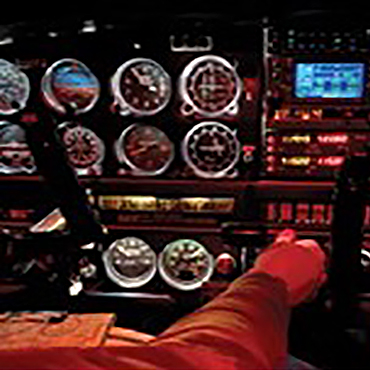
Aeronautical decision-making (ADM) covers every task pilots perform from preflight to securing the aircraft after flight. How we go about gathering relevant information and acting appropriately on that information is critical to our success and sometimes, to our survival.
One aspect of ADM is knowing what we, and our aircraft, are capable of accomplishing on a given day and what conditions we need to ensure a safe flight. These are our personal minimums — the minimum conditions we need for a safe flight.
Personal Minimums
Personal minimums refer to an individual pilot’s set of procedures, rules, criteria, and guidelines for deciding whether, and under what conditions, to operate (or continue operating) in the National Airspace System (NAS).
When developing your personal minimums, be sure to consider the following:
- You can’t develop your personal minimums just before takeoff. They need to be established well in advance of your flight.
- If you haven’t developed (or recently reviewed) your personal minimums, you should consider doing so before your next flight. A flight instructor can provide much needed guidance and help you perform a more accurate self-assessment of your flying.
- Once they are developed, write them down, and keep them in a place where you can refer to them easily.
- Finally, refer to them often! Personal minimums can save your life and the lives of your passengers.
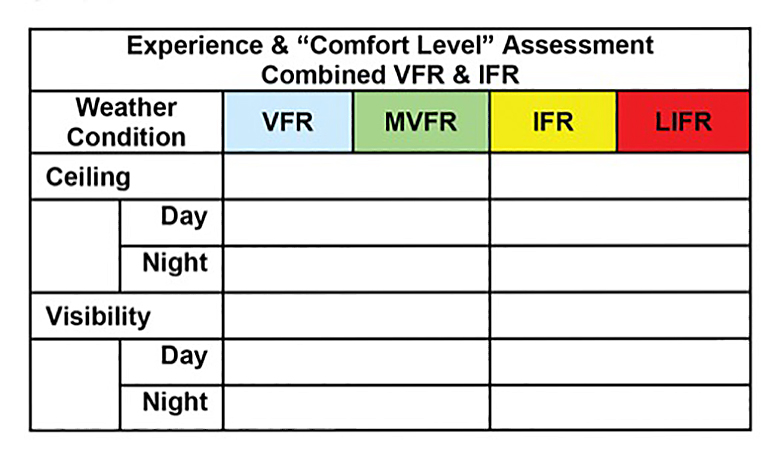
Enter values for weather experience/comfort level using the Personal Minimums Checklist.
Consider this Before Flight
Combined with ADM, personal minimums help you evaluate your risks before you begin your flight. Consider using the PAVE acronym to further develop your risk mitigation strategies in terms of the — Pilot, Aircraft, enVironment, and External Pressures. Ask yourself: Am I feeling well and rested today? Is the aircraft I’ll be flying capable and equipped to complete this trip? Can I and the aircraft fly in the expected weather conditions? Do I feel pressured or rushed to get to my destination?
Weather
Your personal minimums should be based on a clear assessment of pilot certification, experience, proficiency, and currency. Each pilot should establish personal weather minimums, which may be (and often are) above FAA legal minimums for flight.
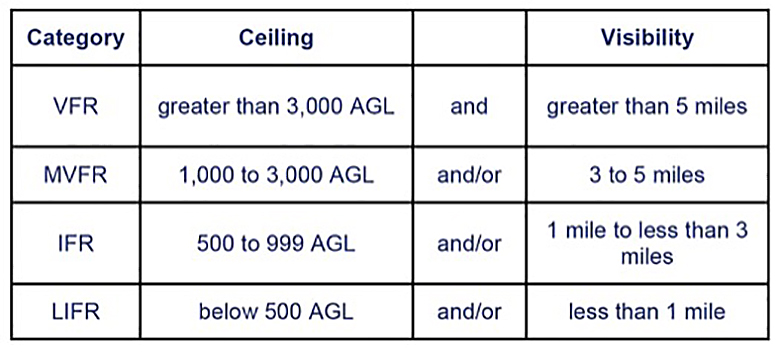
Definitions for VFR and IFR weather minimums.
When we look at the environmental aspect of the risk equation, weather is naturally a huge factor. There are times when it’s easy to describe the flight environment and unfortunately, there are also times when it’s not so easy.
Local flights that never leave the airport can be easy to define. The weather you see is pretty much the weather you’ve got. A local forecast will tell you what to expect in the way of changes and comparing that forecast with present conditions will give you a pretty good idea as to whether the forecast will pan out.
But what if you are taking a longer-than-local flight? Fortunately, there’s a lot of weather information available, at least near cities and towns that have airports. However, if the area is more remote — like Alaska — weather information is much harder to come by.
A Real-time Picture is Worth a Thousand Forecasts
To help fill that gap, the FAA developed a weather camera program that started in Alaska to provide real-time visual and textual weather information to your computer or smartphone. Go to weathercams.faa.gov, and click on any of the “dots” for real-time information.
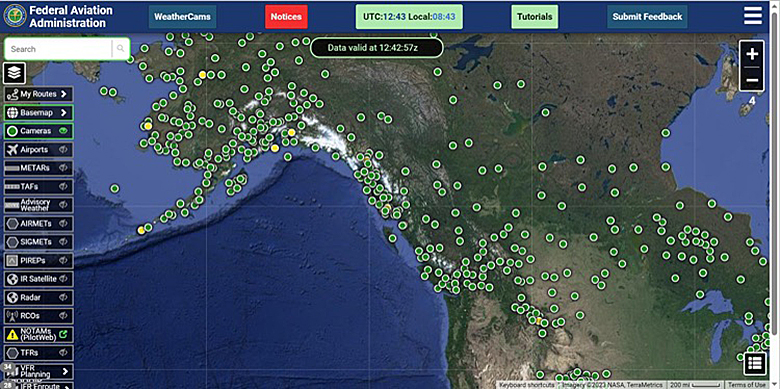
Weather cameras depicted from weathercams.faa.gov.
These weather cameras, offering multiple views of actual conditions, a comparative “Clear-Day” image, and a 6-hour loop of previous images to show trends, were installed along air routes and areas with elevated accident rates to provide a source of data for preflight and inflight weather information. Implementation of the weather camera service across Alaska resulted in an 85% reduction in weather-related accidents and a 69% reduction in weather-related flight interruptions from 2007–2014.
Today, the weather camera program maintains more than 230 camera systems in Alaska and Hawaii. They also host camera images from 280 non-FAA weather camera sites in Alaska, Colorado, Maine, Michigan, Mississippi, Montana, Utah, and across Canada. The program plans to continue its expansion to the rest of the nation, improving aviation safety and efficiency in the general aviation environment and supporting the future of urban air mobility and advanced air mobility.
Monitor weathercams.faa.gov for added weather cameras and be sure to work them into your preflight planning and personal minimum checklists.
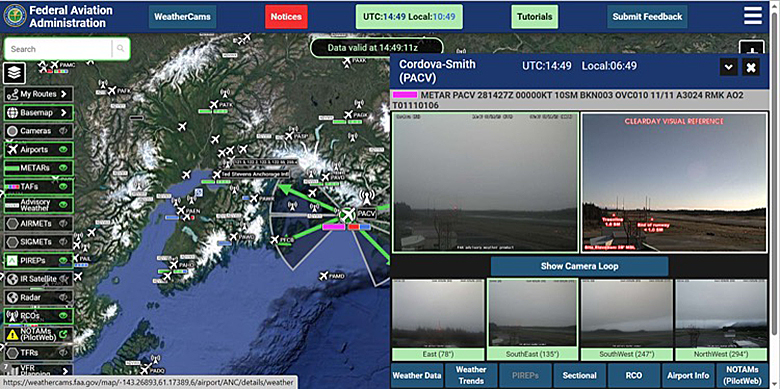
Screenshot of the weather camera site at weathercams.faa.gov.
Use of Weather Information in 57 Seconds
Reprinted with permission from FAA Safety Briefing. Visit the Flight Safety Briefing website: https://www.faa.gov/news/safety_briefing/



